Resources For Writing Sketchy Topics
Resources For Writing Sketchy Topics

Medicine
A Study In Physical Injury
Comas
Medical Facts And Tips For Your Writing Needs
Broken Bones
Burns
Unconsciousness & Head Trauma
Blood Loss
Stab Wounds
Pain & Shock
All About Mechanical Injuries (Injuries Caused By Violence)
Writing Specific Characters
Portraying a kleptomaniac.
Playing a character with cancer.
How to portray a power driven character.
Playing the manipulative character.
Portraying a character with borderline personality disorder.
Playing a character with Orthorexia Nervosa.
Writing a character who lost someone important.
Playing the bullies.
Portraying the drug dealer.
Playing a rebellious character.
How to portray a sociopath.
How to write characters with PTSD.
Playing characters with memory loss.
Playing a pyromaniac.
How to write a mute character.
How to write a character with an OCD.
How to play a stoner.
Playing a character with an eating disorder.
Portraying a character who is anti-social.
Portraying a character who is depressed.
How to portray someone with dyslexia.
How to portray a character with bipolar disorder.
Portraying a character with severe depression.
How to play a serial killer.
Writing insane characters.
Playing a character under the influence of marijuana.
Tips on writing a drug addict.
How to write a character with HPD.
Writing a character with Nymphomania.
Writing a character with schizophrenia.
Writing a character with Dissociative Identity Disorder.
Writing a character with depression.
Writing a character who suffers from night terrors.
Writing a character with paranoid personality disorder.
How to play a victim of rape.
How to play a mentally ill/insane character.
Writing a character who self-harms.
Writing a character who is high on amphetamines.
How to play the stalker.
How to portray a character high on cocaine.
Playing a character with ADHD.
How to play a sexual assault victim.
Writing a compulsive gambler.
Playing a character who is faking a disorder.
Playing a prisoner.
Portraying an emotionally detached character.
How to play a character with social anxiety.
Portraying a character who is high.
Portraying characters who have secrets.
Portraying a recovering alcoholic.
Portraying a sex addict.
How to play someone creepy.
Portraying sexually/emotionally abused characters.
Playing a character under the influence of drugs.
Playing a character who struggles with Bulimia.
Illegal Activity
Examining Mob Mentality
How Street Gangs Work
Domestic Abuse
Torture
Assault
Murder
Terrorism
Internet Fraud
Cyberwarfare
Computer Viruses
Corporate Crime
Political Corruption
Drug Trafficking
Human Trafficking
Sex Trafficking
Illegal Immigration
Contemporary Slavery
Black Market Prices & Profits
AK-47 prices on the black market
Bribes
Computer Hackers and Online Fraud
Contract Killing
Exotic Animals
Fake Diplomas
Fake ID Cards, Passports and Other Identity Documents
Human Smuggling Fees
Human Traffickers Prices
Kidney and Organ Trafficking Prices
Prostitution Prices
Cocaine Prices
Ecstasy Pills Prices
Heroin Prices
Marijuana Prices
Meth Prices
Earnings From Illegal Jobs
Countries In Order Of Largest To Smallest Risk
Forensics
arson
Asphyxia
Blood Analysis
Book Review
Cause & Manner of Death
Chemistry/Physics
Computers/Cell Phones/Electronics
Cool & Odd-Mostly Odd
Corpse Identification
Corpse Location
Crime and Science Radio
crime lab
Crime Scene
Cults and Religions
DNA
Document Examination
Fingerprints/Patterned Evidence
Firearms Analysis
Forensic Anthropology
Forensic Art
Forensic Dentistry
Forensic History
Forensic Psychiatry
General Forensics
Guest Blogger
High Tech Forensics
Interesting Cases
Interesting Places
Interviews
Medical History
Medical Issues
Misc
Multiple Murderers
On This Day
Poisons & Drugs
Police Procedure
Q&A
serial killers
Space Program
Stupid Criminals
Theft
Time of Death
Toxicology
Trauma
More Posts from Zeroplasma and Others
Release him. Hes a silly lil guy

I needed to put him in a jar
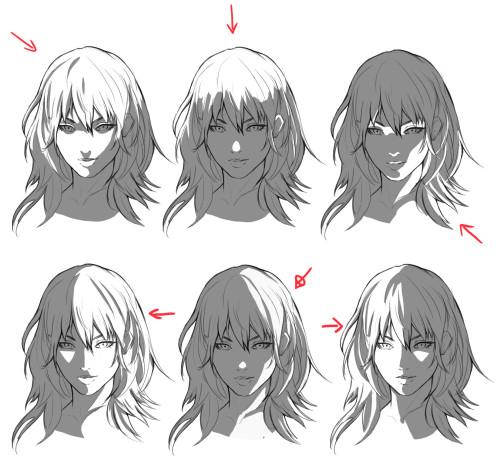

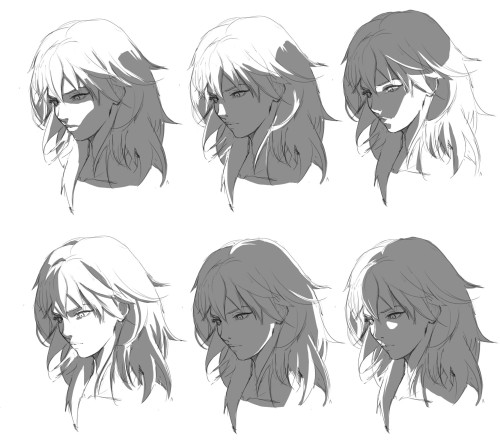
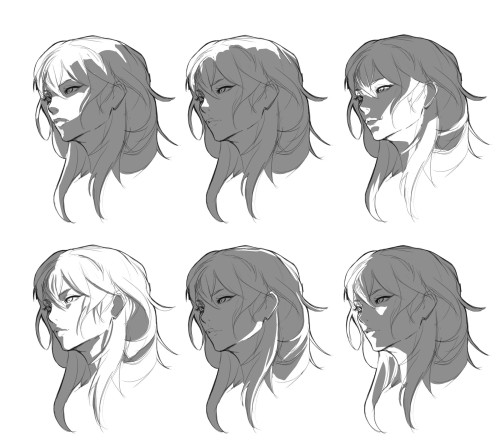
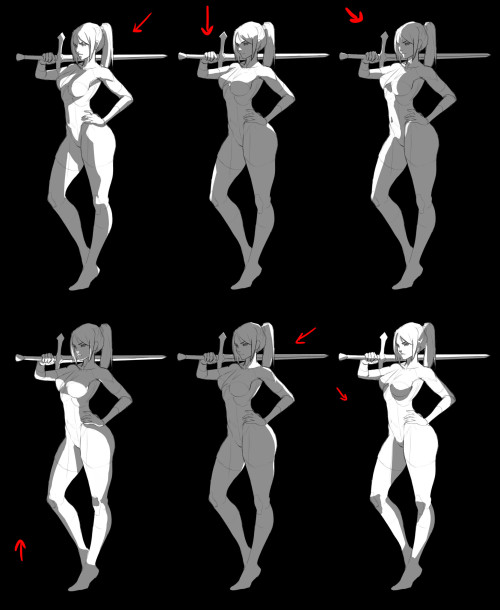
Lighting Studies by Andrew Lester
Tips to freelance illustrators to avoid being screwed over
Hello! I’m Gabrielle Ragusi. I’ve been a freelance illustrator for years now and, as many other freelancers, I had to deal with difficult situations in the past - recent past. These situations come with the job (for everyone), but they can be easily avoided… if only I had known this sooner!
This post doesn’t paint a pretty picture of the one client, but know that I refer to a very small percentage of people (the clients I work with are actually great).
Yet, the one client exists and these tips might help you face them.
When The One Client tries to screw you over.

From time to time, clients will try to have their way with unforeseeable requests and demands at work started and, quite often, at work done.
Solution: State your terms.
Before starting a project, even a sketch, I strongly suggest sending a contract or a simple Terms of Agreement document in which you state everything: commission process, revisions, payment method, ownership… This way they won’t be able to make up some half-ass excuse for their demands.
Also, you don’t have to be overly generous. If the client asks for extra revisions, ask for extra payment. The extra money will cover the extra time you spent on the project, so don’t feel guilty about it.
When The One Client sells bad ideas or asks for the wrong revisions.

Clients may know what they want, but they also might try to sell ideas that you know won’t work or ask for revisions that won’t make the project look any better. They won’t consciously bamboozle you, but the project has your name on it and judgement will come with the audience feedback.
Solution: You’re the artist in this project, so speak your mind. Giving your clients alternatives and your opinion helps the client know that you care about the project and that you know your stuff. You want the best for your client.
When The One Client wants you to work on spec.

Solution: Don’t.
On-spec work is a bad idea. If clients contact me, I take for granted they’ve seen my portfolio and know what I do, but if you’re just starting as a professional, my suggestion is to ask for a minimum upfront payment.
The power to say yes doesn’t always apply.
This isn’t about The One Client but about our own ‘Yes’, when inside we’re screaming ‘Hell no’, screwing us over.
Yes is not always good. When in doubt, think about your lack of time, disinterest in the project and all those things that lead to bad results!
If you don’t have time to work on a new commission, say no. If the project isn’t your cup of tea, say no.
Also, not all clients are jerks, so if you explain you don’t have time to work on another project right now but they like your portfolio, it’s possible that they will contact you again in the future or ask for your time schedule.
(Don’t) Assume that clients know your art style.
This one is tricky and has a lot to do with the first stage of commissions and my personal experience. When clients contact me for the first time, most have seen my portfolio and know what I do. They contact me because of what I do and how I do it. When these clients say “I love your work”, I naturally assume they’ve seen my portfolio.
But when there are no signals that the person contacting me has seen my work, I can’t assume. This happened just a few weeks ago with a client who asked for my availability to illustrate a book after seeing an illustration of mine (the book was about faeries, my illustration had faeries). Problem is I assumed they knew my work, but they didn’t. What happened is that they asked me to work on spec, I said no and gave them a minimum quote for an initial sketch instead. Feedback received, I finally understood they hadn’t in fact seen my portfolio, although I’m not sure where they found my email address.
I don’t have a real solution to this kind of situation other than not assuming things. I guess it’s a matter of dealing with The One Client once again.
Payment fees are covered by the client, always.
If you receive payments through PayPal and similar services, I’m sure you know about the fees.
Unfortunately, I found the solution to this only a couple of years ago - looking back at all the money PayPal took from me in fees, I want to cry (living in Europe and working with clients based anywhere in the world, these fees vary, from 2,9% to 4,5% + small transfer fees).
Now I send all invoices myself (I don’t let clients send money my way on their own) and I add a tax that covers PayPal or Stripe’s fees to the project’s quote: this is not money that ends up in my pocket, it’s money that PayPal takes, mind you.
My final advice is: be professional.
The One Client will try your patience, but don’t lose your composure. Even in disagreement, be professional, offer your thoughts and compromise if necessary. If the project is successful, The One Client will be happy. You want your clients to be happy.
I hope you’ll find this post helpful!
Peace out,
Gabrielle
Follow me on Instagram - ArtStation - YouTube
some resources for people who want to start animating
free animation programs
the 12 principles of animation
51 animation exercises (from beginner to expert)
glen keane animates a scene
my advice: have fun and play–play is learning | always be watching real life to see how things move | also be watching cool animations to learn from them | it’s hard but so worth it when things turn out well, good luck!
do you have any tips on drawings noses? particularly non-white noses?? all the tutorials are european noses and i just want to learn how to draw my own nose!!
oh i feel you. the nice thing about being a poc is that you can always study yourself in the mirror to learn how to draw yourself better! but anyways:


if you’re wondering which kinds of noses are frequent for which race, i like to use this guide. I can’t verify how accurate it is, but it’s pretty damn comprehensive for racial traits around the world. I also really like this guide for learning how to draw a variety of East Asian noses (it’s not all flat!). Here’s an equivalent guide that includes drawing African noses. And there’s always Google images for more specific requirements.
+ 3D models are really helpful when drawing noses: x x x
+ here are some general nose tutorials by better artists lol: x x

Friendly reminder that babes with clinical depression are awesome and I hope they have healthy ways to cope.

Ma’am your vibes.
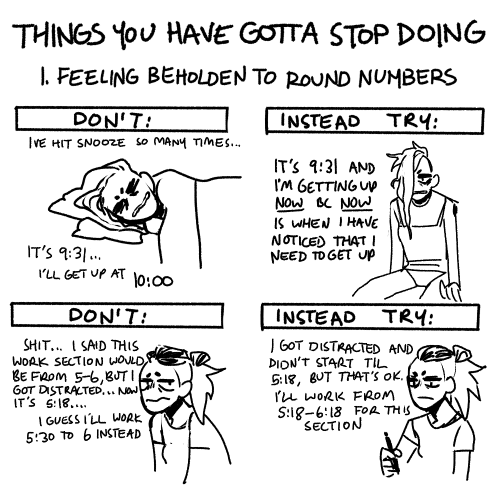








a lot of us are working from home now, pretty abruptly. it’s hard, and especially if you’re like me, a sudden lack of structure coupled with really harsh self-expectations/a tense or unforgiving temperament is really challenging.
i started working from home fulltime this year, and my stop it series is a set of doodled observations i’ve made about the obstacles, bad habits, and unhealthy expectations i’ve found myself running into as i adjust. i hope maybe they can be helpful to other people too!
please check out the linked tag bc i have further observations/clarifications on these in the captions of the individual posts, but i figured it’d be good to finally dump all the notes i’ve made so far into one place.
and a final note on what i’ve run into as i get used to working from home: it is a really really difficult balance for me, bc on one hand i really NEED a lot of self-discipline and productivity assists to get things done and make enough money to survive. but on the other hand, a loooooot of productivity advice/motivation/tools out there are really heavily keyed into capitalism and the concept of productivity as self-worth, and it’s easier than you think to slide into destructive thinking because you’re trying to keep yourself on track. do what you have to do, but make sure that the measures you take to try to make home employment work and get things done are always abt helping yourself do what you need to do without strife, not wringing as much work out of yourself as possible.

Copic Tutorial - Skin by Laovaan
literally most things that people write off as just ‘textures’ to use in graphics are stolen & unsourced material created by artists or photographers NOT meant to be used as elements in projects without royalty payments. you can say ‘it’s just random tumblr posts they don’t care’ but you wouldn’t want someone to take your work and edit into their work so they can be praised for their beautiful style and creativity even if they just post it on social media w/o profit, would you?? so maybe if you browse pinterest or google images for pictures without finding the original source, you’re using images that you’re not allowed to use without realizing it.
you see it on here a lot especially in (i won’t link anything but i’m sure you know what i mean) those album track ‘aesthetics’ posts, au ‘aesthetic’ posts (you see these less in kpop, but where people use non-royalty free images to kinda craft a visual au), and even just rather typical graphics that have a lot of ‘texture’ elements. and texture packs too!! that’s often where the problem starts; people just collect images (often literal art), compile them in a folder w/o sources, then insist no one can repost those images w/o crediting the person who compiled them. what???
SO may i suggest some of my fave places you can get FREE, ROYALTY-FREE elements that are totally legal to use
creativemarket has 6 free high-quality resources (textures, brushes, fonts, etc), different every week! wow awesome i check it every week
search ‘freebie’ on behance. awesome stuff!!! lots of v nice templates textures and fonts
mockup zone freebies
unsplash: tons of very nice free photographs, not shitty stock photos
pexels: same idea. + they have an adobe plugin so you can get photos without closing your editor damn nice
pixelsquid is a super cool free program (again w a ps plugin that i love) with lottts of super cool hq 3d elements!
as to not make this too long: spoongraphics, lostandtaken (textures galore), pixeden, freebiesbug.
-
 hquntinghunter reblogged this · 1 month ago
hquntinghunter reblogged this · 1 month ago -
 voidofthearchive reblogged this · 1 month ago
voidofthearchive reblogged this · 1 month ago -
 miloucie liked this · 1 month ago
miloucie liked this · 1 month ago -
 barelybuckley reblogged this · 1 month ago
barelybuckley reblogged this · 1 month ago -
 someonebored666 liked this · 1 month ago
someonebored666 liked this · 1 month ago -
 eldritchhellbitch liked this · 1 month ago
eldritchhellbitch liked this · 1 month ago -
 non-binar-ysunset reblogged this · 1 month ago
non-binar-ysunset reblogged this · 1 month ago -
 realredbanana reblogged this · 1 month ago
realredbanana reblogged this · 1 month ago -
 realredbanana liked this · 1 month ago
realredbanana liked this · 1 month ago -
 writingreblogg reblogged this · 1 month ago
writingreblogg reblogged this · 1 month ago -
 masterbutchbaiter liked this · 1 month ago
masterbutchbaiter liked this · 1 month ago -
 lurkinginthed3ep liked this · 1 month ago
lurkinginthed3ep liked this · 1 month ago -
 almostuseful reblogged this · 1 month ago
almostuseful reblogged this · 1 month ago -
 radval liked this · 1 month ago
radval liked this · 1 month ago -
 rottenstrawberrygirl reblogged this · 1 month ago
rottenstrawberrygirl reblogged this · 1 month ago -
 strawberryshygirl liked this · 1 month ago
strawberryshygirl liked this · 1 month ago -
 yanauuh liked this · 1 month ago
yanauuh liked this · 1 month ago -
 xcherrymochix liked this · 1 month ago
xcherrymochix liked this · 1 month ago -
 littlehaize reblogged this · 1 month ago
littlehaize reblogged this · 1 month ago -
 lurker-no-more2814 reblogged this · 1 month ago
lurker-no-more2814 reblogged this · 1 month ago -
 leftguard66 reblogged this · 1 month ago
leftguard66 reblogged this · 1 month ago -
 xxxuselessxxxx reblogged this · 1 month ago
xxxuselessxxxx reblogged this · 1 month ago -
 mr-mcduckface reblogged this · 1 month ago
mr-mcduckface reblogged this · 1 month ago -
 mr-mcduckface liked this · 1 month ago
mr-mcduckface liked this · 1 month ago -
 magicalbookowl liked this · 2 months ago
magicalbookowl liked this · 2 months ago -
 hearteyedmorena reblogged this · 2 months ago
hearteyedmorena reblogged this · 2 months ago -
 hearteyedmorena liked this · 2 months ago
hearteyedmorena liked this · 2 months ago -
 a11ey-r0se reblogged this · 2 months ago
a11ey-r0se reblogged this · 2 months ago -
 stars-on-my-bedroom-ceiling liked this · 2 months ago
stars-on-my-bedroom-ceiling liked this · 2 months ago -
 examishbookwyrm reblogged this · 2 months ago
examishbookwyrm reblogged this · 2 months ago -
 antagonisttendencies reblogged this · 2 months ago
antagonisttendencies reblogged this · 2 months ago -
 lyssa-071409 liked this · 2 months ago
lyssa-071409 liked this · 2 months ago -
 axolotl-00997 liked this · 2 months ago
axolotl-00997 liked this · 2 months ago -
 kirbysreturntodreamlanddx reblogged this · 2 months ago
kirbysreturntodreamlanddx reblogged this · 2 months ago -
 fifty-erasers liked this · 2 months ago
fifty-erasers liked this · 2 months ago -
 miss-bushido liked this · 2 months ago
miss-bushido liked this · 2 months ago -
 gone-astrayy liked this · 2 months ago
gone-astrayy liked this · 2 months ago -
 anonymoustreatconsumer reblogged this · 2 months ago
anonymoustreatconsumer reblogged this · 2 months ago -
 my-dog-is-a-bin-ho reblogged this · 2 months ago
my-dog-is-a-bin-ho reblogged this · 2 months ago -
 my-dog-is-a-bin-ho liked this · 2 months ago
my-dog-is-a-bin-ho liked this · 2 months ago -
 madamemaya reblogged this · 2 months ago
madamemaya reblogged this · 2 months ago -
 admiralginkgo reblogged this · 2 months ago
admiralginkgo reblogged this · 2 months ago -
 wyrmsy liked this · 2 months ago
wyrmsy liked this · 2 months ago -
 ibishtyok reblogged this · 2 months ago
ibishtyok reblogged this · 2 months ago -
 ibishtyok liked this · 2 months ago
ibishtyok liked this · 2 months ago -
 the-symphony-of-lydia-brown reblogged this · 2 months ago
the-symphony-of-lydia-brown reblogged this · 2 months ago -
 krnssinrtn reblogged this · 2 months ago
krnssinrtn reblogged this · 2 months ago -
 vivi-taylorsversion liked this · 2 months ago
vivi-taylorsversion liked this · 2 months ago -
 i-am-not-me liked this · 2 months ago
i-am-not-me liked this · 2 months ago
